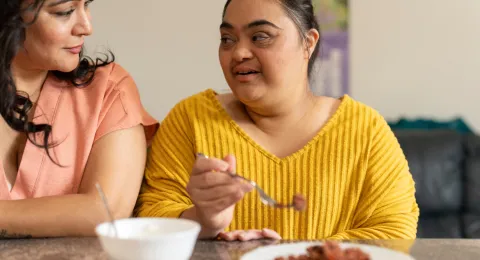Proposals to reduce or restrict SNAP funding threaten real harm to Minnesotans —especially children, seniors, and rural communities.
Impact of SNAP cuts to Minnesota children, youth and families
Fewer dollars mean less food on the table for families already struggling. In 2023, 20% of households receiving SNAP had no other income. SNAP was their only lifeline.
Cuts disproportionately affect:
- Working families with children
- Seniors on fixed incomes
- Adults with disabilities
- Tribal Nations
- Rural communities
SNAP serves over 440,000 Minnesotans, including:
- 152,000 children
- 72,000 seniors
- 52,000 adults with disabilities
Cuts to SNAP risk public health and drive up medical costs
Food insecurity isn’t just about hunger. It's a health crisis.
When experiencing food insecurity, households spend 45% more on medical care each year than those with consistent access to food. That’s $6,100 per person annually, compared to $4,200 for people with reliable access to food.
Without SNAP, the risk of chronic health conditions rises, especially for children, working-age adults and older Minnesotans. Protecting SNAP means protecting health and preventing higher health care costs for families and the state.
Every day, a Minnesotan on SNAP receives $5.46. This is not a luxury, but a lifeline that helps people meet their basic needs.
SNAP builds a healthier future for Minnesota’s children
Cuts to SNAP will leave thousands of Minnesota’s youngest residents at risk of hunger and developmental setbacks:
- Tens of thousands of Minnesota’s youngest children rely on SNAP.
- In 2023 alone, nearly 50,000 children under age 6 received support through SNAP.
Without SNAP, schools would see more children starting behind — hungry, distracted and less ready to learn.
- Nearly one in three kindergarteners in Minnesota benefited from SNAP.
- In the 2022–2023 school year, 27.8% of kindergarteners — more than 18,000 children — entered school with the support of SNAP.
Cutting SNAP means sacrificing school readiness and widening achievement gaps.
- Participation in SNAP increases the chances of graduating from high school by as much as 18%.
When SNAP is cut, Minnesota pays the price
If SNAP is cut, the consequences for Minnesota are immediate and far-reaching. Impacting public health, the State and local economies, education, and workforce stability.
Public health suffers. Food insecurity is directly linked to higher rates of chronic conditions. Without SNAP, more vulnerable Minnesotans will go without consistent access to food, increasing the strain on an already stretched health system.
Health care costs will rise. In a 2022 study, the Minnesota Department of Human Services found that annual health care costs decreased by an average of $99 for every month someone otherwise subject to SNAP time limits continued to receive SNAP benefits.
Food shelf visits are surging, a warning sign for Minnesota
Minnesotans made nearly 9 million visits to food shelves in 2024, setting a new record for the fourth year in a row. That’ s 1.4 million more visits than in 2023, and 2.5 times more than before the pandemic in 2019.
This steep and sustained rise in food shelf use is a clear signal: more families are struggling to meet their basic needs, despite working, budgeting and doing their best to get by.
This underscores the urgent need to protect and strengthen programs like SNAP, which reduce pressure on emergency food systems and help Minnesotans avoid crisis in the first place.
